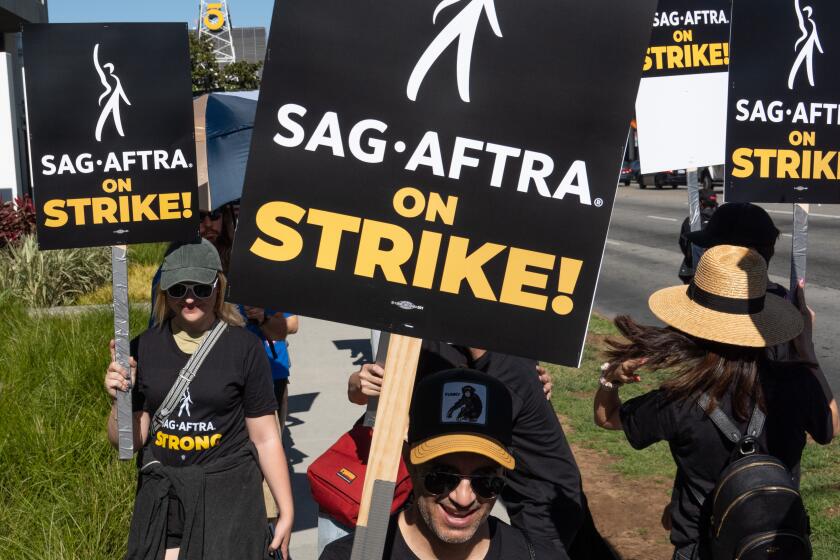Where it’s booming
LIKE the rising tide that lifts all boats, the stratospheric run-up in Southland housing prices has put Watts -- yes, Watts -- in the vanguard of home appreciation in L.A. County.
The once predominantly African American community, which gained international notoriety during the 1965 riots, saw resale-home values increase by more than 40% last year, according to DataQuick Information Systems, a real estate research firm. Countywide, the median rose 24.8%.
Fueled by demand from Latino home buyers, Watts is on target this year to fulfill analysts’ predictions that the Southland’s entry-level market still has room for hefty appreciation. A comparison of sales in August for this year and last, the latest period for which figures are available, showed an increase of 41.3% in the price of single-family resale homes to a median of $325,000.
Affordability, or at least some semblance of it, is attracting first-time buyers. And the prices have made it a hot spot for property flippers. Nearly 10% of Watts buyers this year have resold within three months, compared with an average of 3% throughout Southern California during the last decade.
In today’s Watts, Latinos make up the majority. U.S. Census Bureau figures show they are taking the place of African Americans leaving Los Angeles for the Inland Empire, Palmdale, Lancaster and the southern United States. Although some blacks are buying homes in Watts, most of those who turn out looking on weekends are Latino.
At a recent open house in an elegant two-bedroom home on East 93rd Street, Jeanette Williams smiled at a prospective buyer and handed over her cellphone. Because Williams, an agent for Century 21 Award, does not speak Spanish, she depends on an agent back at the office to translate. Nine out of 10 of her clients are Latino.
While Carlos Gonzales looked at the formal dining room, his friend Gabriel Ochoa translated as Williams quoted the home’s price at $357,000 and explained, “This is a more serene area of Watts.”
Gonzales answered in Spanish. “I’m hoping to find a single-family residence for my wife and two children. Right now, I’m still paying rent, and the rent is too high.” Compared with his rental in another neighborhood of South Los Angeles, the construction worker said, “it’s a better area.”
Daniel Alvarez needs no translator. The bilingual agent with American Team Properties prints his fliers in English and Spanish. He specializes in South Los Angeles and can cite Watts streets and what’s on the market from memory. “Watts is appealing because of the prices,” he said, even though it is rapidly catching up with Los Angeles overall.
American Team Properties has more than 30 listings in Watts, ranging from $260,000 for a small house in need of major work to $410,000 for a newly built, four-bedroom home. All fall below the L.A. County median price in August of $525,000 for an existing single-family home.
Patriotic red, white and blue “for sale” signs representing his American Team Properties dominate Watts, but numerous agents also list houses, resulting in two or three competing signs on a street.
More than 100 Watts properties are on the market -- many are tract homes of fewer than 1,000 square feet, built after World War II. So far this year, 490 single-family homes have sold in the 4-square-mile neighborhood, according to DataQuick.
“Family follows family,” observed Sergio Alvarez, Daniel’s brother, who owns American Team Properties and has a predominantly Latino client base. He has sold homes in Watts for 15 years. “We have clients who could afford more in Norwalk or Glendale or Highland Park, but they say, ‘No, my uncle lives in Watts. I want to live close by,’ ” he said. They are following relatives who began moving to Watts in large numbers in the 1990s.
Despite years of high crime, this part of Los Angeles also boasts quiet residential streets lined with neat homes and tidy yards with blushing bougainvillea, roses, violet morning glories, tropical birds of paradise and well-tended vegetable gardens.
But there’s no denying the gang problem, and the violent crime that exists in parts of Watts. The Jordan Downs housing project, one of five public housing complexes in Watts, is one of the city’s most dangerous areas, according to the Los Angeles Police Department. Watts is part of a 37-square-mile area patrolled by the South Bureau. If that area was a separate city, LAPD Chief William Bratton recently said, “It would be the most violent city in America.”
The crime is not omnipresent, however, and does not deter newcomers or some old-timers.
Retired high school English teacher Millicent Hill recently paid $310,000 for a pink stucco house with two bedrooms and one bathroom on East 112th Street. She also owns a three-bedroom on East 92nd Street that she paid $121,000 for in 2000. Trees laden with loquats, grapefruit, oranges and avocados shade the frontyard. It sits among homes owned by black neighbors, many of them senior citizens who moved to Watts when it was a gateway to L.A. from the South.
She runs Mama Hill’s Help Inc., a nonprofit, after-school tutoring program and safe haven often attended by rival gangbangers, out of one of her houses.
On her peaceful street, some black families own three houses, she said, “one for the son, one for the daughter and one for the parents.”
“This area also reminded me of the South. I was raised in Nashville. Most of my neighbors are Southern. I like the ambience,” she said. “These are genteel people.”
Rodney Shepard, a residential and commercial developer, can afford to live anywhere in Southern California.
He chooses Watts.
“It’s my home. I was born in Watts,” said Shepard, 55. “My parents were entrenched in Watts.”
So much so that his father, a carpenter, and his mother, a homemaker who moved to Watts from New Orleans, owned five houses on the same block of East 111th Street.
Shepard did move away, for college, and then to swanky homes in Long Beach and Lakewood. Then, when his aging parents took ill, he and his wife, Yvonne, a schoolteacher, moved back.
His company, RSS Development Inc., has built 50 homes over two decades in Watts, and he has never sold one to an African American because the demand has been from Latinos. He also has built a complex for senior citizens and another for affordable housing in Watts.
He’s been buying vacant lots in Watts for years and is in the process of building three-bedroom, three-bathroom market-rate homes, which he may sell in the $350,000-to-$375,000 range.
“By the time we build, by the time we sell,” Shepard said, “who knows what the market will be?”






